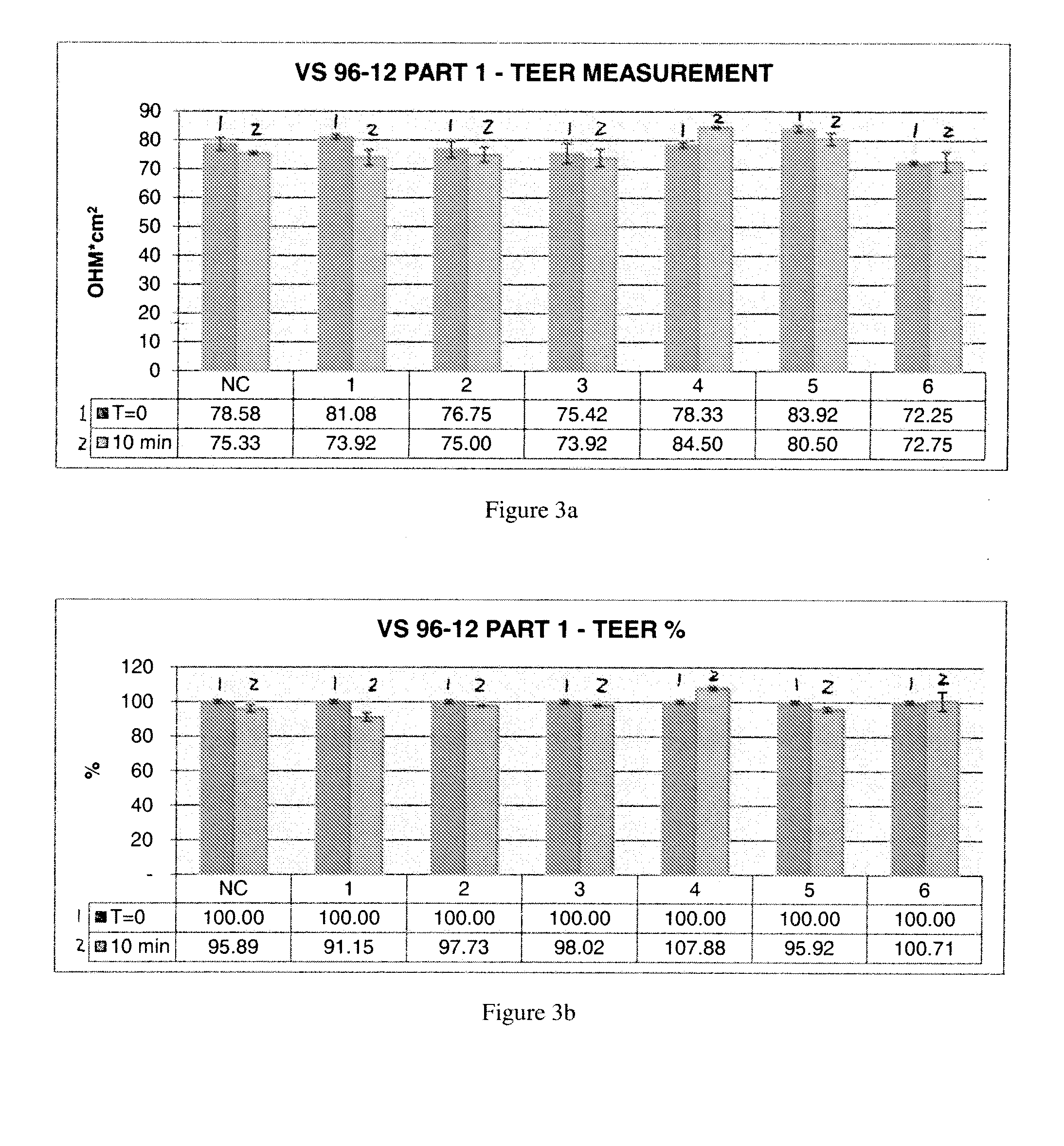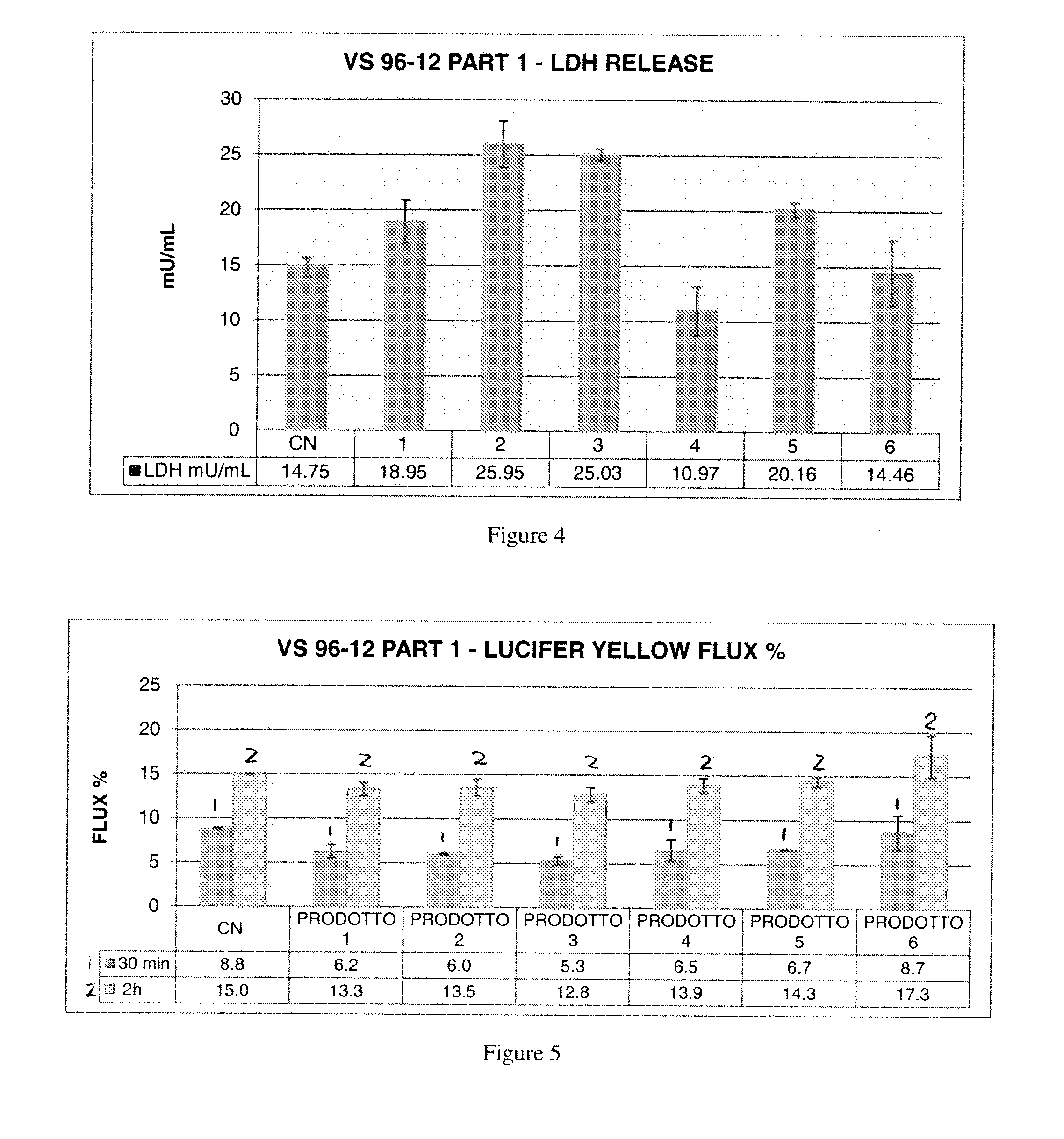Treatment of skin or mucosal pathology
a technology for mucosal pathology and skin, applied in the direction of drug compositions, impression caps, applications, etc., can solve the problems of plaque and bacterial control not being achieved, the activity of cimetidine was reduced, and the reduced activity further negatively affected, so as to promote the mucosal adhesion or film forming ability of the composition, prevent the progression, and increase the mucosal adhesion.
- Summary
- Abstract
- Description
- Claims
- Application Information
AI Technical Summary
Benefits of technology
Problems solved by technology
Method used
Image
Examples
example 1
Preparation of Mucoadhesive Compositions
[0106]Provided below are exemplary mucoadhesive formulations. Percentages are expressed in parts by weight.
1. Mouth-Wash
[0107]
Cimetidine0.50%N,O-Carboxymethyl chitosan0.50%70% Sorbitol FU47.67% Sodium benzoate1.00%Xylitol0.60%Disodium EDTA0.013% Flavors0.30%Dye E 124q.s.Citric acidq.s. to pH 6.8-7.2Osmosized waterq.s. to 100%
2. Oral Gel
[0108]
Cimetidine0.60%N,O-Carboxymethyl chitosan0.70%Sodium alginate1.20%70% Sorbitol FU5.00%Preservativeq.s.Flavorsq.s.Dye E 124q.s.Osmosized waterq.s. to 100%
3. Oral Spray
[0109]
Cimetidine0.60%N,O-Carboxymethyl chitosan0.40%Allantoin0.20%Preservativeq.s.Flavorsq.s.Osmosized waterq.s. to 100%
example 2
Characterization of Mucoadhesive Compositions
[0110]1. Oral Tissue Model
[0111]Tissue-engineered oral mucosal models have been developed for clinical applications and also for in-vitro studies of biocompatibility, mucosal irritation, disease, and other oral biology phenomena. The development of tissue-engineered models of oral disease has enhanced the understanding of disease progression and simplified the study of therapeutics. Dongari-Battzoglou, A., et al. Development of a highly reproducible three-dimensional organotypic model of the oral mucosa. Nat Protoc. 2006; 1(4): 2012-2018; Moharamzadeh, K., et al., Tissue-Engineered Oral Mucosa; a Review of Scientific Literature, J Dent Res 86 (2):115-124, 2007; Schmalz G., et al. Release of prostaglandin 2, IL6 and IL-8 from human oral epithelium culture models after exposure to compounds of dental materials. Eir. J. Oral. Sci., 108:442-448 (2000).
[0112]The regulatory framework in Europe strongly suggests moving from animal based pre-clin...
example 3
Film Forming, Tissue Restoring and Protective Efficacy of the Mucoadhesive Formulations
[0176]1. Purpose
[0177]An experimental model based on a mechanically injured 3D human in vitro tissue of oral mucosa was proposed to assess a membrane barrier function through film forming, tissue restoring and protective efficacy of new formulations to be registered as Medical Devices Class III containing a complex of cimetidine-N,O-carboxymethyl-chitosan.
[0178]The test items have been tested compared to positive and negative controls after a 10 minute exposure to each control and test composition (exposure time selected according to the preliminary results, described previously, on injured tissues followed by a 1 h and 6 h recovery period. TEER, LY, and LDH were evaluated.
[0179]2. Methods
[0180]The protocol has been carried out on duplicate tissues for the following series of test situations:[0181]Negative control: not injured—RHO treated with saline solution[0182]Positive control: Injured RHO con...
PUM
| Property | Measurement | Unit |
|---|---|---|
| Fraction | aaaaa | aaaaa |
| Composition | aaaaa | aaaaa |
| Electrical resistance | aaaaa | aaaaa |
Abstract
Description
Claims
Application Information
 Login to View More
Login to View More - R&D
- Intellectual Property
- Life Sciences
- Materials
- Tech Scout
- Unparalleled Data Quality
- Higher Quality Content
- 60% Fewer Hallucinations
Browse by: Latest US Patents, China's latest patents, Technical Efficacy Thesaurus, Application Domain, Technology Topic, Popular Technical Reports.
© 2025 PatSnap. All rights reserved.Legal|Privacy policy|Modern Slavery Act Transparency Statement|Sitemap|About US| Contact US: help@patsnap.com



